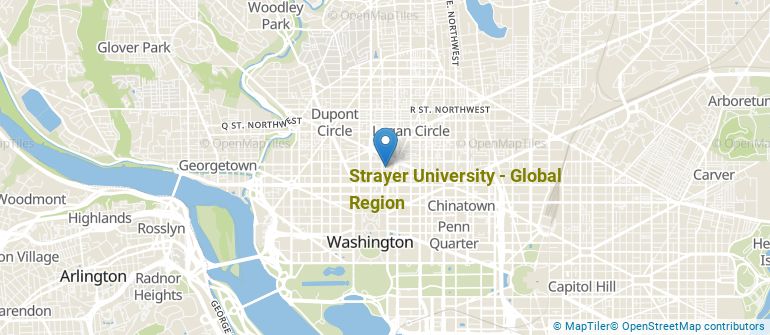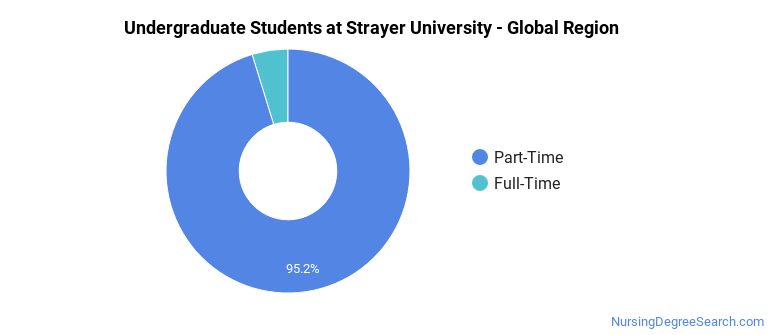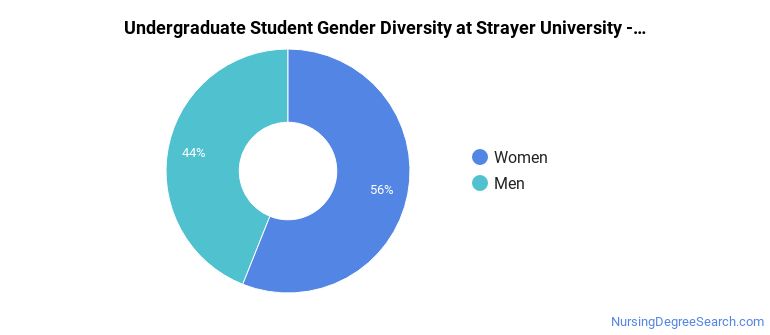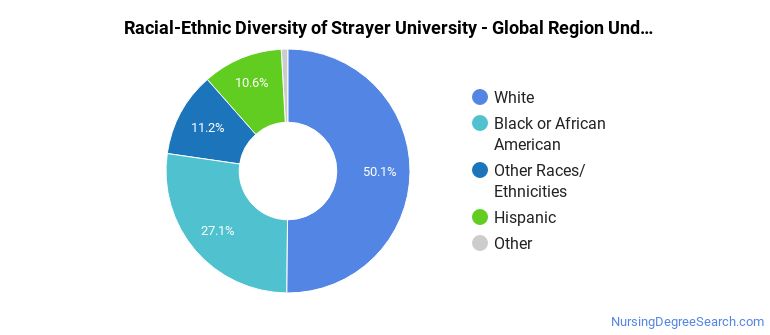Strayer University - Global Region Nursing Programs
Strayer University - Global Region is a private for-profit institution situated in Washington, District of Columbia. Washington is a great location for students who prefer city over country life.
Where Is Strayer University - Global Region?

Contact details for Strayer University - Global Region are given below.
| Contact Details | |
|---|---|
| Address: | 1133 15Th St Nw, Suite 200, Washington, DC 20005 |
| Phone: | 877-445-7180 |
| Website: | www.strayer.edu |
How Do I Get Into Strayer University - Global Region?
You can apply to Strayer University - Global Region online at: https://application.strayer.edu/
Can I Afford Strayer University - Global Region?
Student Loan Debt
While almost two-thirds of students nationwide take out loans to pay for college, the percentage may be quite different for the school you plan on attending. At Strayer University - Global Region, approximately 33% of students took out student loans averaging $8,417 a year. That adds up to $33,668 over four years for those students.
Strayer University - Global Region Undergraduate Student Diversity

There are also 3,333 graduate students at the school.
Gender Diversity
Of the 339 full-time undergraduates at Strayer University - Global Region, 44% are male and 56% are female.

Racial-Ethnic Diversity
The racial-ethnic breakdown of Strayer University - Global Region students is as follows.

| Race/Ethnicity | Number of Grads |
|---|---|
| Asian | 3 |
| Black or African American | 92 |
| Hispanic or Latino | 36 |
| White | 170 |
| International Students | 0 |
| Other Races/Ethnicities | 38 |
Geographic Diversity
District of Columbia students aren't the only ones who study at Strayer University - Global Region. At this time, 39 states are represented by the student population at the school.
References
*The racial-ethnic minorities count is calculated by taking the total number of students and subtracting white students, international students, and students whose race/ethnicity was unknown. This number is then divided by the total number of students at the school to obtain the racial-ethnic minorities percentage.
More about our data sources and methodologies.
